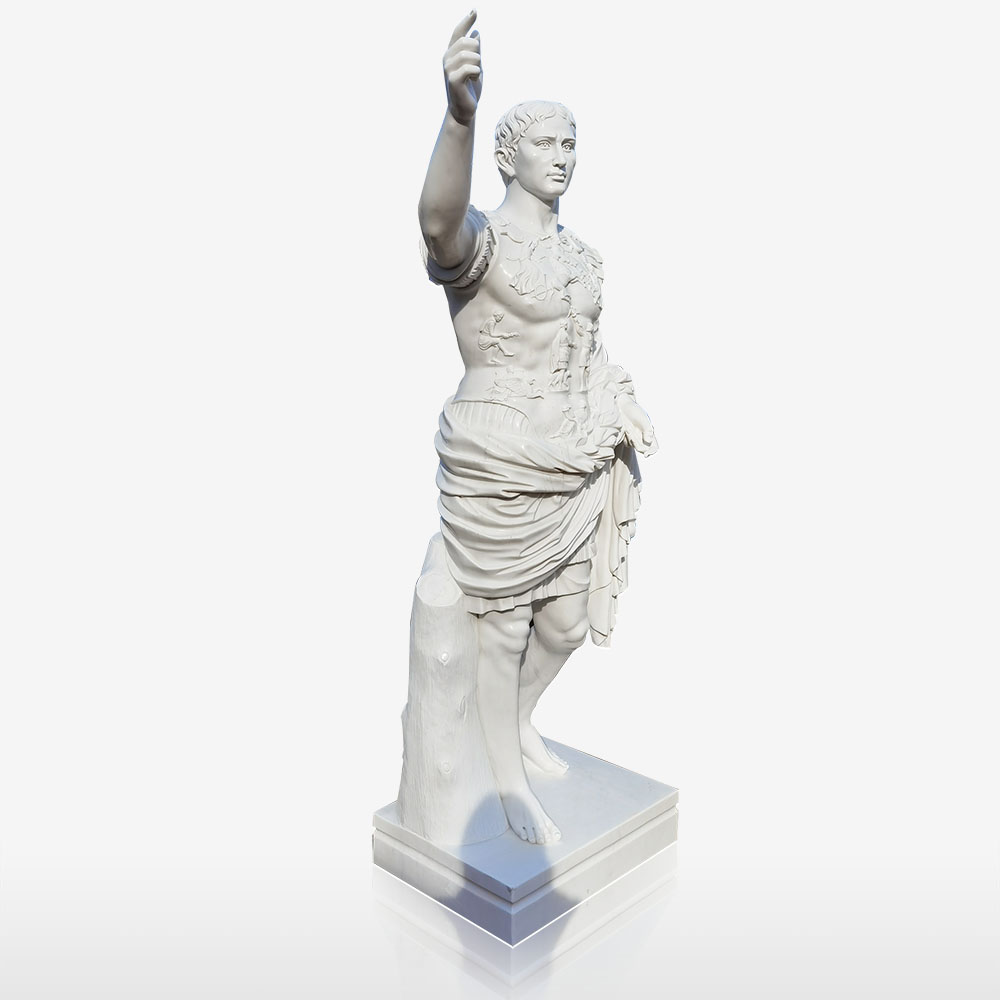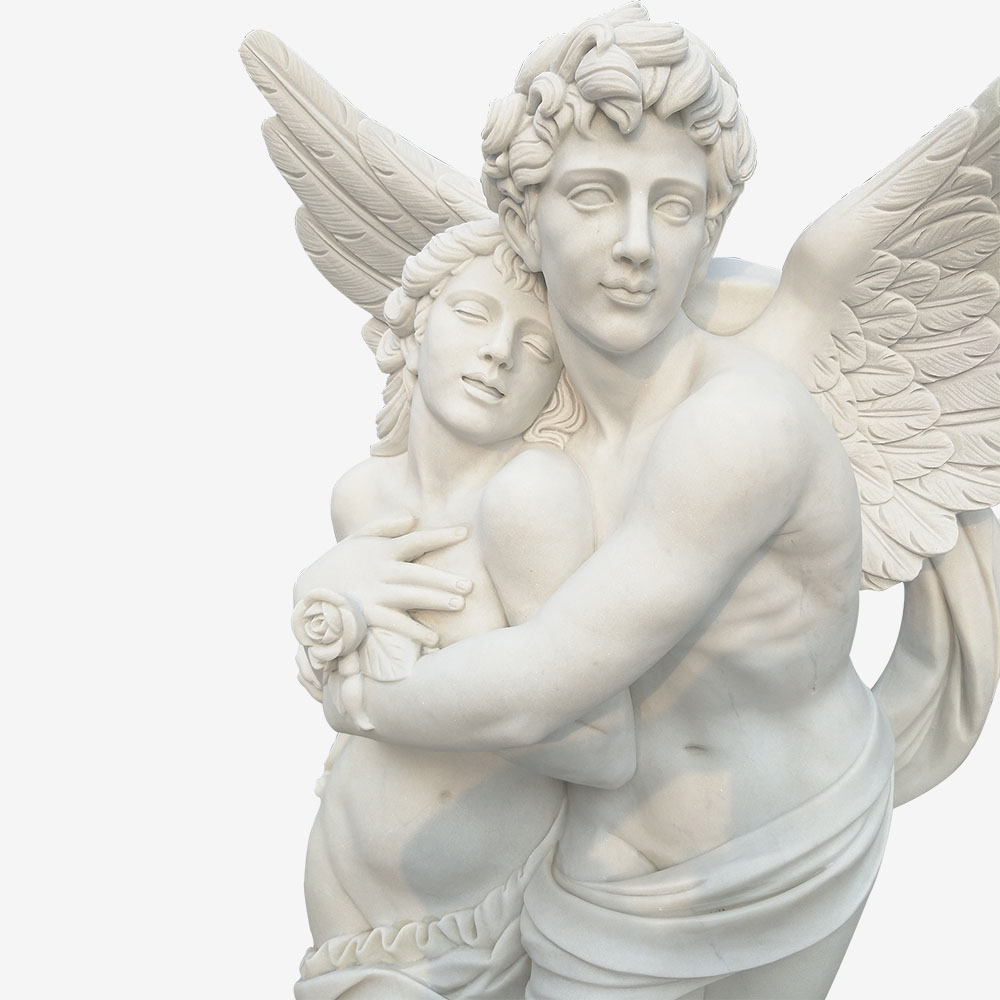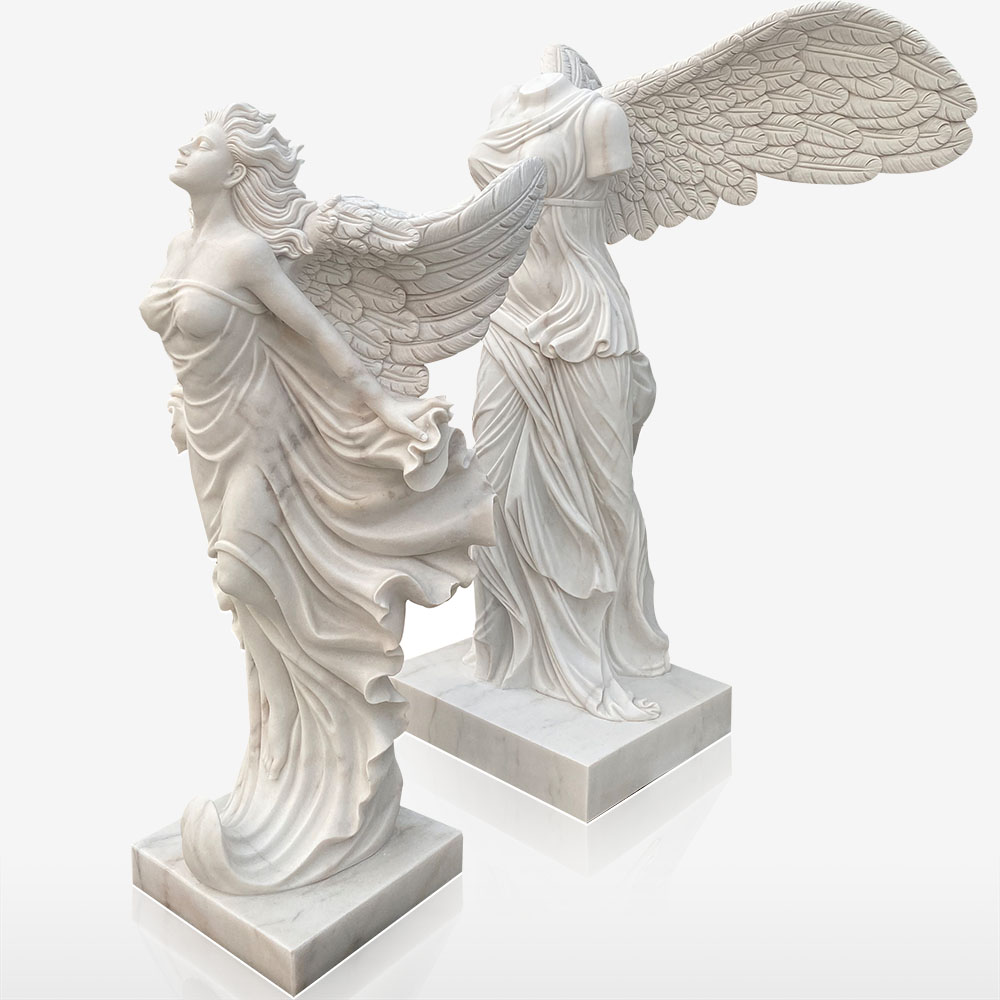Unveil the timeless narratives woven into classical statues, from ancient myth to modern artistry.
Take a minute and let’s both explore our imagination.
Imagine yourself standing in the presence of a classical statue. Its marble surface, weathered by the centuries, tells a silent tale of time and history. As you gaze into its chiseled features, you can almost sense the stories it whispers.

Source: Simone Pellegrini
Classical marble statues are more than just works of art. They are windows into the beliefs, myths, and values of the cultures that created them. From the gods and goddesses of ancient Greece to the heroes and heroines of the Roman Empire, these statues have captured the imagination of humanity for generations.
In this journey, we will delve deep into the world of classical statues, unearthing the enchanting tales they whisper through their chiseled forms. We will explore the sun-drenched shores of ancient Greece, where the first classical statues emerged, and the grandeur of the Roman Empire, where they reached new heights of artistry. We will also trace how these classical marvels influenced Renaissance artists, inspired neoclassical revivals, and continue to shape the creative expressions of today's visionaries.
Whether you are a seasoned art historian or simply drawn to the beauty of these timeless forms, join me in this odyssey through time and artistry. Let us embark on an adventure to uncover the extraordinary stories behind famous marble statues, stories that have shaped our understanding of beauty, mythology, and the human spirit.
Step into the time machine and journey back to the cradle of civilization, ancient Greece and Rome. Here, the foundations of classical statues were laid, and these masterpieces served as living embodiments of cultural beliefs and religious devotion.
From the powerful city-states of Athens to the serene islands of the Aegean, early Greek sculptures adorned every corner, telling stories of gods, goddesses, and legendary heroes. These statues were more than just works of art; they were revered symbols of faith and cultural identity.

Source: Wilhelm Gunkel
In Rome, the art of sculpting took on a new life, as the Romans fused Greek inspiration with their own flair for grandeur and realism. Walk through the cobbled streets of the Eternal City and encounter emperors immortalized in marble, their statues serving as propaganda to solidify their reign.
And let's not forget ancient Egypt, where marble statues were gateways to the afterlife. Meticulously carved to ensure a seamless journey for the departed, these statues, with their solemn expressions and intricate hieroglyphics, held the keys to the mysteries of the underworld.
These ancient famous marble statues commanded awe and reverence in their heyday. They were direct lines to the beliefs and aspirations of our forebears, visual time capsules of their world.
As we study these ancient roots, we're not just looking at statues; we're peering into the hearts and minds of civilizations long past. These sculptures were the storytellers, the keepers of traditions, and the anchors of faith. They were the soul of ancient cultures, and their legacy endures through the ages.
Stay with us on this journey, because the stories are only just beginning!
Set sail across the Mediterranean to the heart of the Roman Empire, where the art of sculpting underwent a transformation of its own. The Romans, with their insatiable appetite for grandeur and power, took the foundational principles of Greek sculpture and sculpted them into something entirely their own.
Imagine strolling through the marble halls of Rome and encountering the marble statue of Augustus of Prima Porta, a magnificent testament to Roman artistry. This statue of Emperor Augustus, with its intricate armor and regal countenance, was more than a mere likeness; it was a strategic masterpiece. Commissioned to commemorate Augustus's military victories, it sent a clear message of Roman might and imperial authority.

(Marble Statue Of Julius Augustus)
But the Romans didn't stop there. Ascend the Capitoline Hill and gaze up at the Marcus Aurelius equestrian statue. This towering bronze sculpture not only captured the likeness of the wise emperor, but it also immortalized his benevolent rule. It's a symbol of leadership and statesmanship that continues to inspire leaders to this day.
What made Roman sculpture truly unique was its dynamic realism. While Greek statues aimed for perfection in form, the Romans sought to capture the essence of their subjects—wrinkles, scars, and all. These sculptures weren't idealized gods, but portraits of real people, conveying their strength, wisdom, and humanity.
Marcus Aurelius equestrian statue. Source: Afshin Izadi
As we explore these Roman adaptations, it's like witnessing a dialogue between ancient civilizations. The Greeks, with their ideals of beauty, passed the torch to the Romans, who infused their statues with a palpable sense of authority and gravitas.
Here in the heart of the Empire, we find a fusion of classical elegance and Roman audacity—a testament to the enduring power of artistic innovation.
Fast forward a few centuries, and we find ourselves in the midst of the Renaissance—a period of rebirth and rediscovery of classical art and knowledge. In the bustling streets of Florence, artists like Leonardo da Vinci, Michelangelo, and Raphael drew inspiration from the ancient world.
Classical statues took center stage once again. Michelangelo, in particular, marveled at the grace and perfection of Greek and Roman sculptures. He studied these ancient works, dissecting the very essence of form and proportion. The influence of classical ideals can be seen in every stroke of his brushes and every chip of his chisels.

David. Source: Jack Hunter
His iconic "Marble Statue of David" is a testament to the marriage of classical aesthetics with Renaissance innovation. The towering statue, an embodiment of human potential, pays homage to the classical tradition while marking a watershed moment in the evolution of sculptural technique.
The Renaissance wasn't confined to Italy alone. Across Europe, artists sought to emulate the classical ideals that had ignited a cultural revolution. In France, the Louvre became a treasure trove of classical sculptures, drawing artists and scholars from across the continent.
The Renaissance was more than just an artistic movement; it was a rekindling of the flame that had once illuminated the ancient world. It was a testament to the enduring legacy of classical art, proving that its influence could transcend time and geography.
As we delve into this era, we find ourselves at the crossroads of history, witnessing the harmonious marriage of old and new, ancient and modern. The classical statues, once forgotten in the annals of time, now stood as guiding lights for a new generation of artists and thinkers
Imagine walking through the opulent salons of Paris, where artists and intellectuals gathered to celebrate the timeless beauty of classical forms. The Neo-Classical era had dawned, and a renaissance of classical aesthetics was underway in art, architecture, and culture.
Sculptors like Antonio Canova in Italy and Jean-Antoine Houdon in France emerged as leading exponents of this era, their works capturing the essence of classical elegance. Canova was renowned for his ability to breathe life into marble, crafting sculptures that seemed almost ethereal in their grace and detail. His masterpiece, "Psyche Revived by Cupid's Kiss," tells the tale of love and transformation with such exquisite precision that it feels as if the figures might step off their pedestals at any moment.

Houdon's sculptures, on the other hand, were celebrated for their remarkable realism. His busts of Enlightenment thinkers like Voltaire and Rousseau stand as a testament to his ability to capture not only the physical likeness of his subjects but also the intellectual spirit of the age.
The Neo-Classical era was a time of both homage and reinvention. Artists, architects, and thinkers looked to the past, drawing inspiration from the ideals of ancient Greece and Rome. This was more than mere imitation; it was a tribute to the enduring relevance of classical aesthetics.
In the Neo-Classical sculptor's hands, ancient myths and legends were reborn, their timeless themes resonating with a new generation. These statues were not simply works of art; they were also vessels of cultural memory, transmitting the values and aspirations of the past to the present.
As we navigate this era, we find ourselves in the midst of a cultural renaissance—a revival that celebrated the timelessness of classical beauty. The statues of this period stand as living monuments to the enduring legacy of ancient art, proving that the past continues to shape our present.
Now, let's fast forward to the present day, where the influence of classical statues continues to resonate in the work of modern artists. While we may be living in an era defined by technology and rapid change, the allure of ancient aesthetics still holds a powerful sway.
Contemporary artists have taken up the mantle, reimagining classical themes in ways that speak to our 21st-century sensibilities. Picture yourself in a bustling art gallery, surrounded by sculptures that echo the forms of ancient gods and heroes, but with a fresh, innovative twist.
Some artists draw on classical mythology to explore timeless themes of love, power, and the human condition. Others use classical techniques as a springboard for entirely new expressions, blending tradition with the avant-garde.

(Marble Statue Of Venus De Milo)
For example, take a look at the works of artists like Anish Kapoor or Jeff Koons. Their sculptures, while firmly rooted in the present, carry echoes of the classical past. Kapoor's monumental forms evoke a sense of awe and wonder, much like the ancient statues that once graced temples and palaces. Meanwhile, Koons' playful reinterpretations infuse classical imagery with a contemporary pop art sensibility.
But it's not just in the realm of fine art that we see these adaptations. From fashion runways to interior design, classical motifs continue to find new life and relevance. You might spot a fashion collection inspired by the drapery of ancient Greek garments or a minimalist living space adorned with sleek, modern interpretations of classical statuary.
In this contemporary landscape, the classical statues of yore are not relics of a bygone era, but living inspirations for a new generation of artists and creators. They serve as a reminder that the stories and ideals that animated ancient art still have the power to captivate and inspire us today.
Classical marble statues continue to leave an indelible mark on our modern society, influencing everything from art and education to popular culture.
These ancient sculptures have become cultural touchstones, their images replicated and reinterpreted in countless forms. They also shape the way we perceive and appreciate art, inspiring contemporary artists with their principles of form, balance, and proportion.

Source: Alexander Nikitenko
Beyond the art world, classical statues remain a cornerstone of education, serving as invaluable teaching tools that offer students a tangible connection to the civilizations of the past. They also play a significant role in architecture, with their columns, friezes, and pediments finding echoes in the grand facades of neoclassical buildings.
However, the legacy of classical famous marble statues is not without its controversies. Debates surrounding issues of cultural appropriation, repatriation, and interpretation continue to shape how we engage with these ancient artifacts.
Despite these challenges, classical statues remain a vibrant and dynamic force in our society. They challenge us to grapple with questions of beauty, heritage, and identity, inviting us to consider the profound impact that art from ages past can have on our lives today.
Marble, bronze, and various types of stone were frequently used to sculpt classical statues due to their durability and suitability for intricate detailing.
Classical marble statues served various functions, including religious devotion, commemoration of leaders, decoration of public spaces, and as symbols of cultural and artistic achievement.
Major museums worldwide, such as the Louvre in Paris, the British Museum in London, and the Metropolitan Museum of Art in New York, house extensive collections of classical statues. Additionally, many ancient sites, like the Acropolis in Athens, feature original and replica sculptures.

The Marbleism Studio offers a gallery of Classical Marble Statues for sale on their website. They also are in the business of manufacturing Custom statues personalized to your specifications. If you would like to learn more or inquire about a marble statue, Contact them via Email, or visit them at Marbleism
Prominent sculptors include Phidias, responsible for the Parthenon's sculptures; Praxiteles, known for his elegant renderings of gods and goddesses; and Polykleitos, renowned for his canon of proportions and the creation of the Doryphoros statue.
In tracing the remarkable journey of classical marble statues from ancient mythology to the present day, we have uncovered the profound stories etched into their graceful forms. These sculptures, hewn from the very essence of ancient civilizations, continue to captivate hearts and minds across the globe.
As we conclude this exploration, it's worth noting that the legacy of classical statues is not confined to the pages of history books or the halls of museums. For those who seek to bring the timeless elegance of classical art into their own spaces, there's a name that stands out in the world of sculpture: The Marbleism Studio.

(Marble Statue Of Winged Victory Of Samothrace)
Renowned for its mastery in crafting custom marble and bronze statues, The Marbleism Studio combines artistry with precision engineering. Their meticulous attention to detail ensures that every piece is a testament to both ancient traditions and modern craftsmanship. From the initial concept to the final delivery, their commitment to excellence shines through.
What sets The Marbleism Studio apart is not only their exceptional skill in statue manufacturing, but also their dedication to customer satisfaction. Their team of experts works closely with clients, turning visions into tangible works of art. The result? Bespoke statues that not only adorn spaces but also tell unique, personal stories.
Imagine a custom marble statue of your favorite classical deity, or a bronze sculpture of a loved one rendered in the timeless style of ancient Greece. The Marbleism Studio can make your vision a reality.
When it comes to delivery, The Marbleism Studio sets the gold standard. Their prompt and reliable service ensures that your custom statue arrives in pristine condition, ready to grace your home, office, or public space with its timeless beauty.

Source: Taylor Smith
In choosing The Marbleism Studio, you're not only acquiring a masterpiece; you're becoming part of a legacy. Their commitment to quality, craftsmanship, and client satisfaction makes them a standout choice for those seeking to bring the enduring magic of classical sculpture into their lives.
As we conclude our journey, let us remember that the stories of classical marble statues are not confined to the past. They live on, in the skilled hands of artisans like those at The Marbleism Studio, shaping the way we connect with the artistry and elegance of ages gone by.